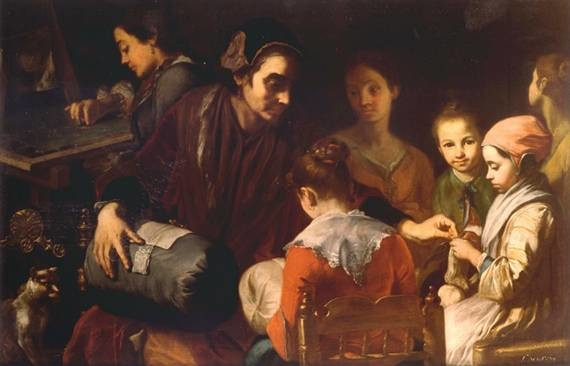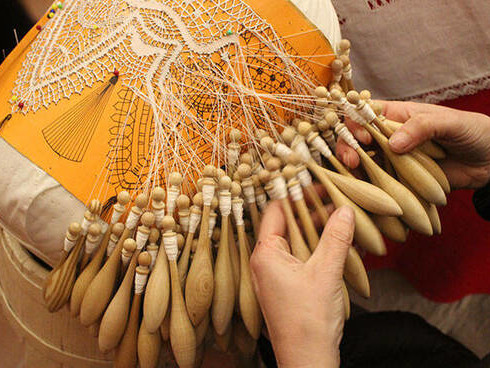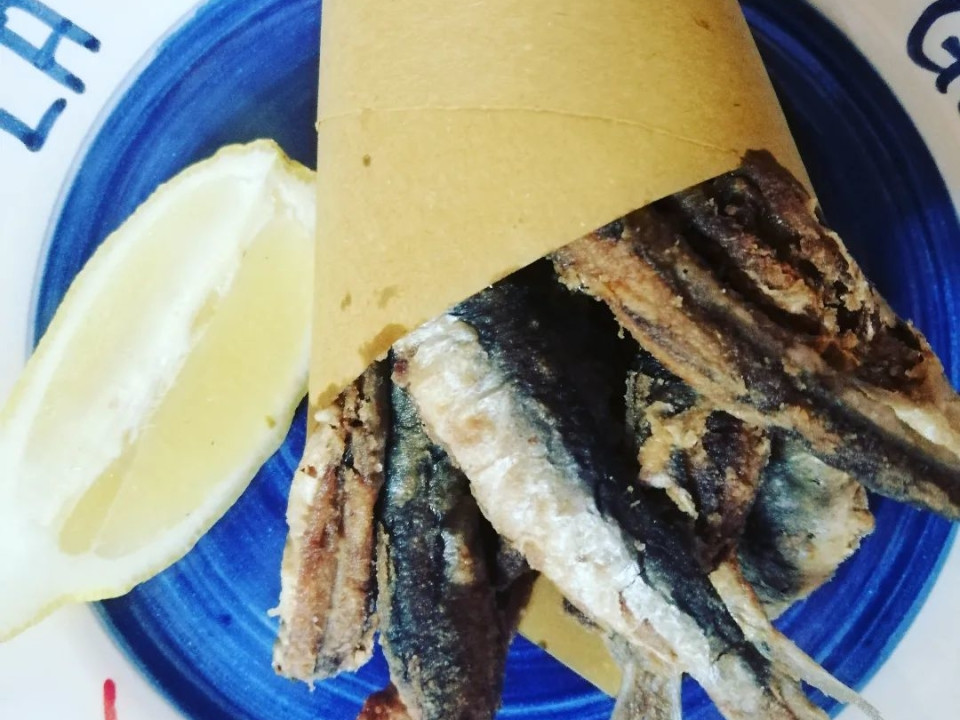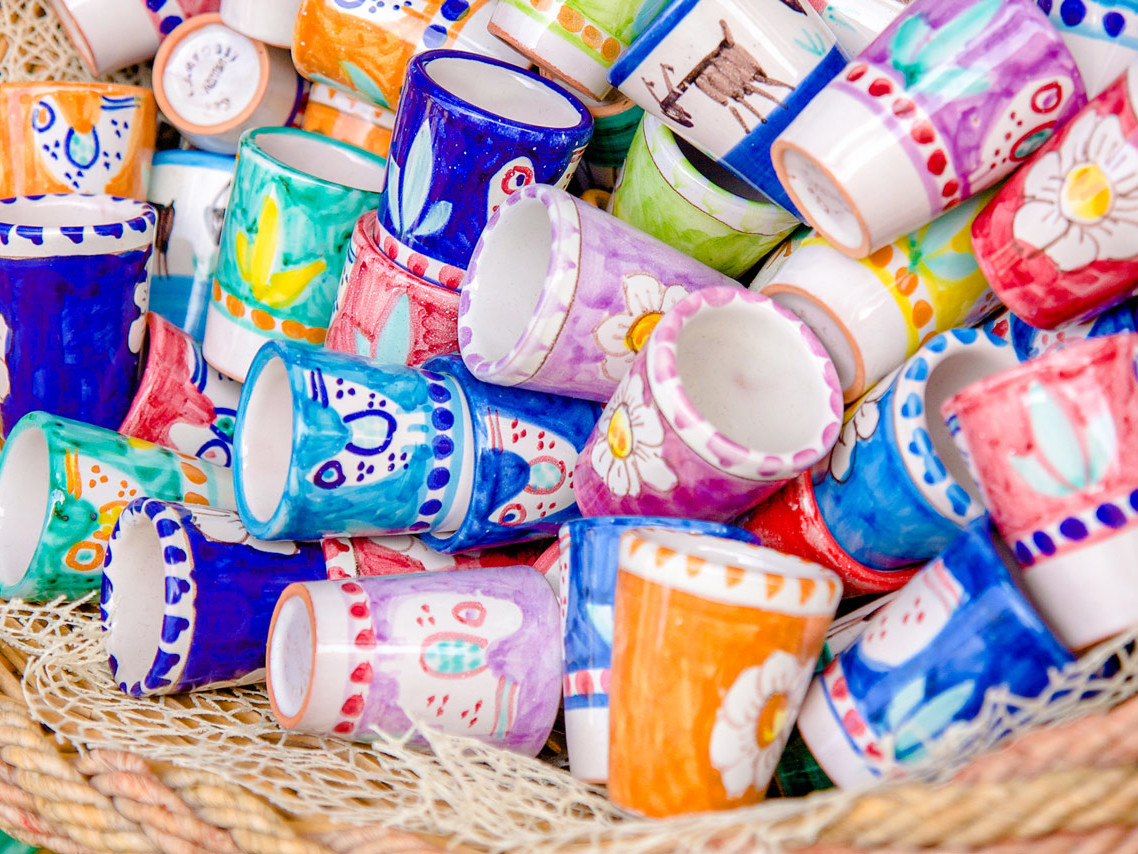THE ANCIENT ART OF BOBBIN LACE ON THE AMALFI COAST
On the Amalfi Coast, the art of bobbin lace, an extremely complex way of embroidery that has ancient roots, is still handed down from generation to generation. Read on to learn more!
by Roberta Cascone
During your walks along the Coast, you will surely have happened to see magnificent doilies or women's dresses decorated with lace in store windows. Have you ever wondered why they are so popular?
It is a very old tradition, whose origins are uncertain, but which has found fertile ground on the Amalfi Coast as well as in many other Italian cities. It is the art of tombolo!
The word tombolo refers to both the lace and the tool used to make it. The tombolo, or the lace pillow, is in fact a cylindrical-shaped pillow on which a sheet is fixed with the design to be made by the skilled hands of the craftswomen. This art is a typically feminine craft, which older women hand down to younger ones with much passion and patience. Embroidery is done using pairs of sticks, called bobbins, as tools, around which the thread of cotton, linen or another fiber is wound.
What is really amazing about this manufacture is that for the most complex workings the bobbins to be used can be as many as a hundred! Moreover, depending on the size of the lace to be made it can take months or even years. Therefore, it is painstaking work that requires enormous patience, a lot of concentration, and great skill.
It is important that in this day and age, when everything is mass-produced very quickly, this art still survives. This is precisely why the technique of bobbin lace should be safeguarded: it is a centuries-old tradition in which skill, creativity and perseverance still count, all qualities that no machine will ever be able to replicate. What are the origins of bobbin lace and why is it so beloved on the Amalfi Coast?
share this article
Positano artisans at work. Ph by authenticamalficoast.it
History and origin of bobbin lace
As I have already mentioned, the origins of the bobbin lace technique are uncertain. Scholars date the first bobbin lace to the 1400s in Molise. Tradition has it that the first to introduce this art to Italy were Spanish nuns from the Benedictine monastery of Santa Maria delle Monache in Isernia. As the art spread throughout Italy, each town then developed and refined its own technique: this is why to this day there are a number of varieties, such as Cantù lace, Punto Venezia, and Scanno and Pescocostanzo bobbin lace. In Campania, bobbin lace always spread thanks to the work of nuns who taught the practice to young novices.
We remember in particular the town of Montefusco in the province of Avellino, where it is possible to admire examples of lace in some of the rooms of the Bourbon Prison, and Santa Paolina also in the province of Avellino, where grape leaf, one of the most complicated shapes, is still made. But the localities in Campania where bobbin lace has spread are many, including also Battipaglia, Pozzuoli, Portici and our own Positano.

The bobbin lace in a Giuseppe Bonito's painting
The bobbin lace in Positano
In the 19th century Positano was already known for the production of silk and canvas, or sack jute. We have to reach the middle of the 20th century to witness the spread of the art of lace-making, thanks to the work of the Vincentian Sisters who began to teach girls this ancient craft. Despite the spread of industry and the closure of the monasteries, the art of bobbin lace-making has remained in Positano, handed down from generation to generation in artisan workshops. Several times it has been proposed as a candidate to become a UNESCO intangible heritage asset, to ensure that it is recognized as an expression of a people and as an art to be safeguarded for future generations.
In Positano the art of bobbin lace has survived thanks to the Positano women who have been committed to handing down this ancient technique, including Mrs. Maria Cinque who, with her local circle, has taught bobbin embroidery to many young apprentices. It is therefore thanks to the determination and passion of these women that bobbin lace continues to be a constant presence on the Coast. After all, only the commitment and stubbornness of the craftswomen can breathe new life into the ancient tradition of bobbin lace and ensure that it can survive in the hurried twenty-first century.
share this article
- John Steinbeck, Nobel laureate in literature, during his travels on the Coast, witnessed bobbin lace-making in Positano. About it, he wrote: "High on the mountain, a convent overlooks the sea; here the nuns initiate little girls into the last delicate art of lace-making. The little girls are paid, and with the proceeds of the lacework the school is helped. The nimble fingers of the little girls working with hundreds of spools make one dizzy, but they raise their heads quietly, and laugh and chat as if they had no awareness of their magical fingers. Some of the work is incredibly beautiful. I saw a tablecloth, a spider web as intricate as a thought. Fifty girls had worked on it for a year."














